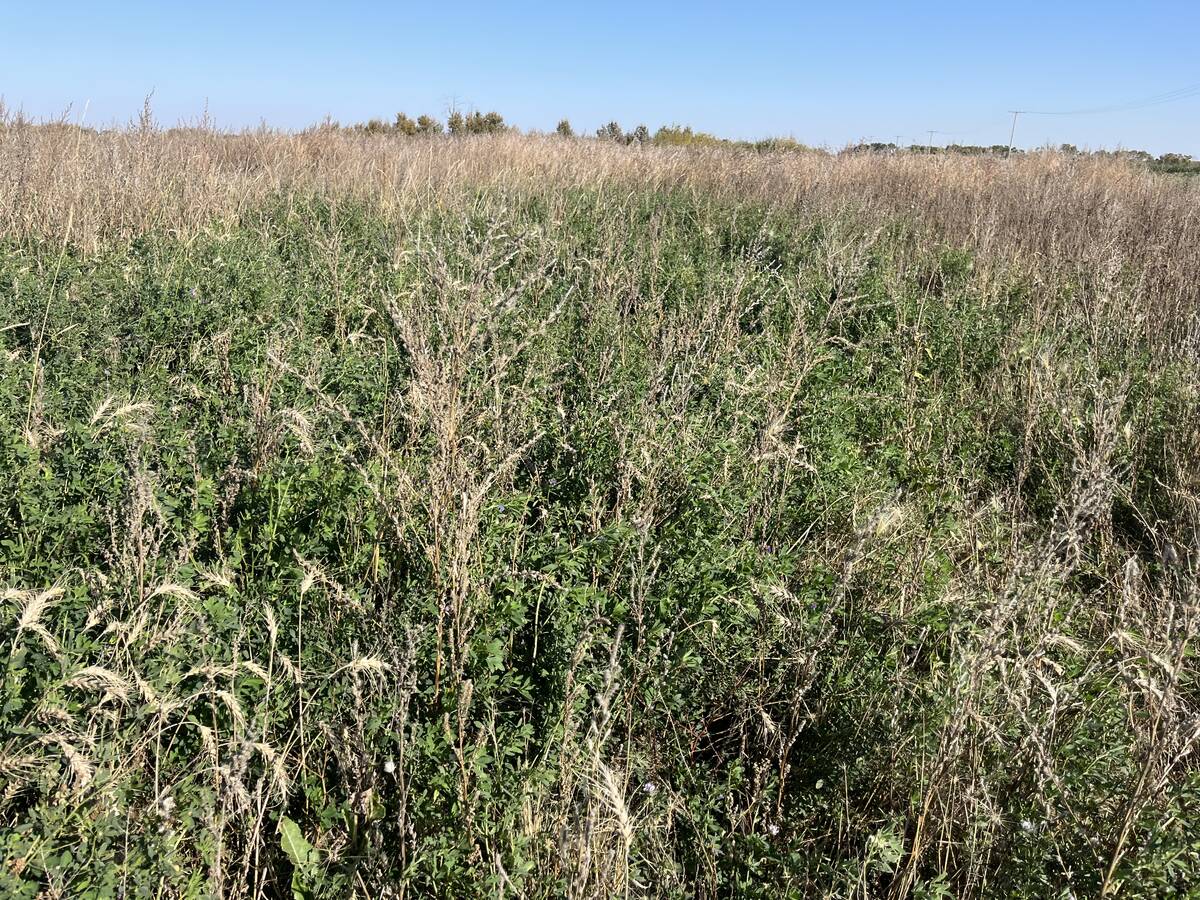RED DEER – A massive four-year health study on western Canadian
livestock is going forward on schedule despite a funding shortfall.
The report on the Western Canada study on animal and human health
effects when exposed to emissions from oil and natural gas fields is
expected in July 2004, said Tee Guidotti, co-chair of the advisory
panel directing the research.
The project ran short of money earlier this year. Parts of the study
were redesigned and downsized with a major effort not to compromise the
Read Also

Dormant seeding forages frees up farmer time and gets ahead of weeds
Dormant seeding isn’t common practice and can appear daunting, but there are some techniques to give Manitoba farmers an edge
results.
“This put an enormous burden on a set of investigators who were already
over-committed,” said Guidotti, an occupational and environmental
health physician at the George Washington University in Washington,
D.C.
“We’re confident that the changes haven’t compromised the study design
in any way but it really is stressing these people out,” he said at the
Clean Air Strategic Alliance conference held in Red Deer June 3-4.
The multi-pronged study is looking at beef cattle, human and wildlife
health effects when exposed to flaring from well sites.
Investigators decided to combine productivity data from the two-year
study period with health information when the study plan was originally
developed.
“We’re getting double bang for the buck on that particular side of the
study,” Guidotti said.
The human health component has been set aside until the cattle and
wildlife study is finished.
The study’s major goal is to learn whether cattle exposed to oil
industry emissions are more prone to disease. It measures exposure
levels and health impacts when animals are exposed to hydrogen sulfide,
sulfur dioxide, polycyclic aromatic hydrocarbons and selected metals.
“A cow is a very large canary so we may gain some guidance to the human
disease study from the outcome of the cattle,” Guidotti said.
Researchers are correlating data on fertility, abortions, stillbirths,
conception rates, neurological and immune system function, as well as
producer treatment records.
“Input we’ve had from producers is that they are deeply concerned about
immune system function so this is incorporated with a separate arm of
the study,” Guidotti said.
Anecdotal evidence from cattle producers suggests cattle are less
productive and seem to suffer reproductive problems when grazing near
flaring sites.
Researchers wanted a variety of cattle groups from diverse geographical
areas. The project is investigating a total of 200 herds in British
Columbia, Alberta and Saskatchewan involving 33,000 breeding females.
About 1,800 necropsies have been conducted and results are being
entered into a database.
Proximity to flares is noted and herd owners are asked to report
unusual activities such as emergency flares, leaks or spills.
The study is unique because it follows the cows through one complete
production cycle from breeding to weaning the calf.
“Don’t expect headlines anytime soon but when the headlines do come
out, you can be sure that this study will be as accurate as we can make
it and the outcomes will be incredibly well tied to exposure data,”
Guidotti said.















